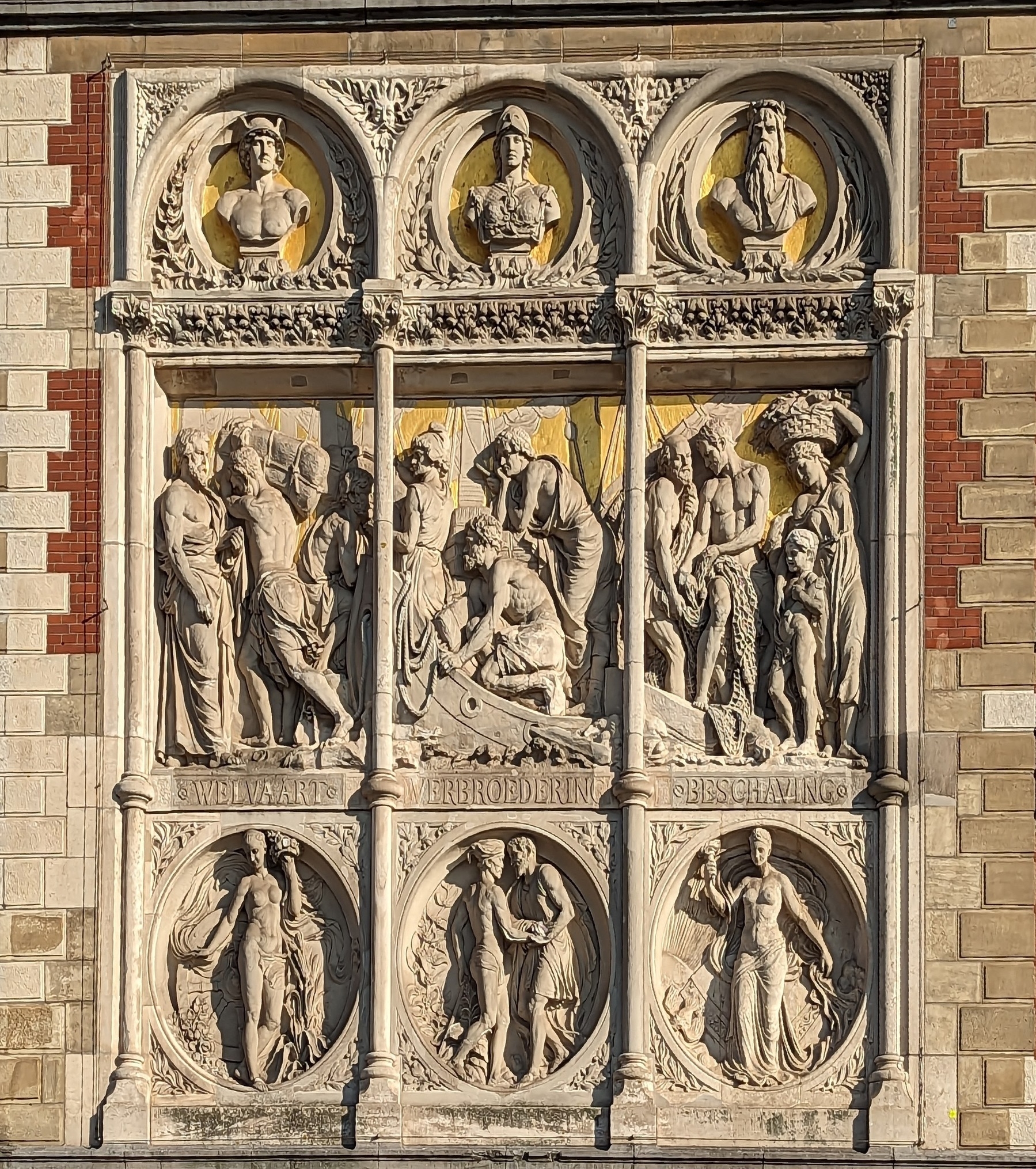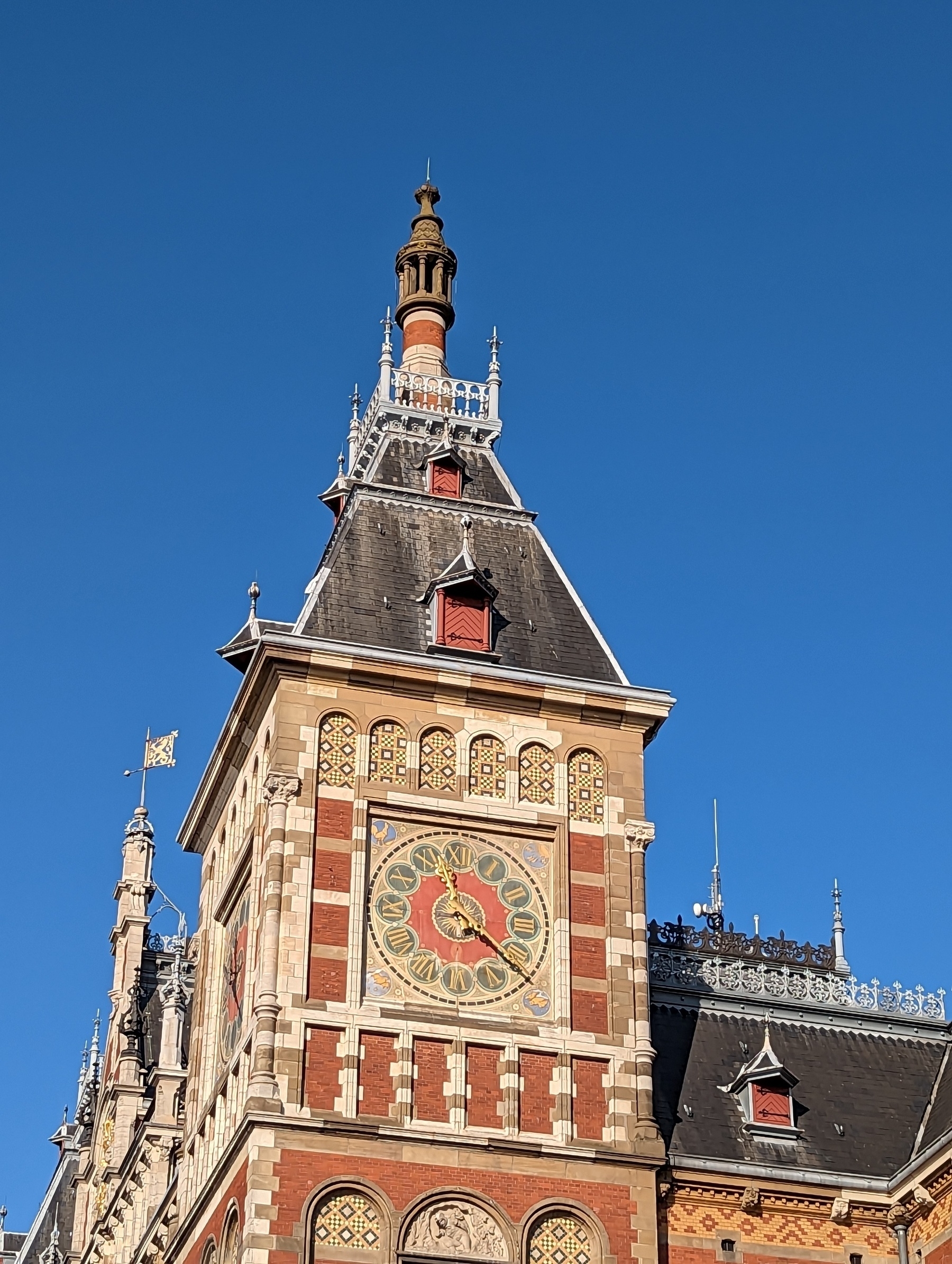🎮 Playing Kirby’s Return to Dreamland Deluxe with my kid. Super fun. Couch co-op Kirby seems to be his gateway to playing instead of just watching. Might do Kirby Star Allies next.
Hi friends! It’s time for an Amsterdam Photo Dump! There are 8 photos here so if you’re viewing this on a timeline, be sure to click through to kimberlyhirsh.com to see them.
Here’s what you’re seeing:
- A street lamp that has been decorated to look like Nijntje (known as Miffy in English).
- The facade of the Royal Palace Amsterdam. (The word for “rabbit” in Dutch is “konijn” and the Dutch name for the Royal Palace is “Koninklijk Paleis,” so I keep trying to come up with a rabbit-palace pun.)
- A detail of a relief on the front of Amsterdam Centraal Station featuring the patron deity of our household, Athena.
- The clock tower at Amsterdam Centraal Station.
- A pedimental sculpture on the National Maritime Museum featuring Neptune, whose image is used heavily in Amsterdam due to the importance of sailing to its history and economy.
- and 8. Votive ships made of wax at the National Maritime Museum.
- A house near the Vondelpark that I thought looked cool and haunted.








🔖 Read Sci-Fi Publishers Are Bracing for an AI Battle by Elizabeth Minkel (Wired).
I’m interested to see how this shakes out.

Finished reading: The Long Way to a Small, Angry Planet by Becky Chambers 📚
Happy to have read it. Turns out vibes are enough when you’ve got charming characters.
I'm a piler-filer. Who are you?
Austin Kleon blogs about pilers and filers, a dichotomy/spectrum he learned about reading Temple Grandin’s book, _Visual Thinking _, in which Grandin discusses Linda Silverman’s work:
In a presentation about the differences in learning styles, Silverman flashes a slide showing a person with a tidy file cabinet and a person surrounded by messy piles of paper. The “filer” and the “pilers,” to use her terms. You probably know which one you are. What does it say about the way you think?
Kleon says:
All of these “versus” type situations can be rethought as spectrums and/or creative tensions. There are times when I want to access that sequential part of my brain and bring order to things, and filing does that, but there are other times I want to access my visual brain, and piles help.
I am my father’s daughter, which means I’m a piler-filer.
Both my dad and I often have stacks that look like a mess to other people. But when I was a teacher, my colleagues marveled at my ability to run exactly what I needed from one of these piles within seconds.
I also had immaculate file cabinets full of things like student paperwork. I love a label maker.
For me and for my dad, piles are for current projects and files are for reference materials and archives. If something goes into a file before we’re done with it, it ceases to exist until an external event prompts us to track it down, by which point it may be too late for us to have done what we needed to do with it.
 .
.
This is a panorama of my desk when I was managing editor at LEARN NC. The stacks on the desk and in the standing file were projects in-progress. I filed finished projects in the drawers in the file cabinet/snack station on the left side of the desk.
So. We’re piler-filers. Are you one, the other, or a combination?
🔖 Read The Battle for the Soul of Buy Nothing by Vauhina Vara (Wired).
This is an excellent long read. There are a lot of good questions here. How can we scale non-capitalist initiatives in a capitalist world? How can we acknowledge volunteer labor in that scaling? How can we support local action without resorting to geographic discrimination?

Currently reading: The Long Way to a Small, Angry Planet by Becky Chambers 📚
Now that I’m reading for vibes & character instead of a narrative arc, I’m enjoying this properly. The book didn’t work for me the first time I tried it.
My kid’s school is hiring a classroom teacher in his age range. So if you got the gig you might get to teach him, and I hear he’s pretty delightful.
🔖📝 Read IF YOU LOVE WRITING, YOU SHOULD RELISH REJECTION.
This is a really helpful piece that reframes rejection as the water writers swim in.
🔖🎓 Read All my classes suddenly became AI classes.
I love the assignment here that asks students to work with ChatGPT as if it were a student and they were a teacher coaching it to get better writing out of it.